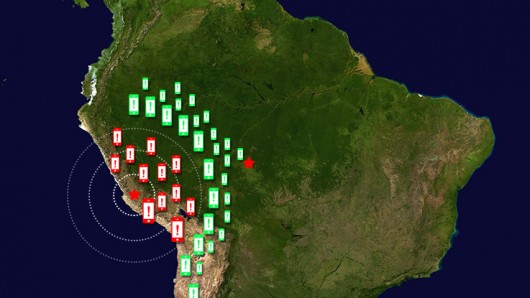
While countries such as Japan have sophisticated earthquake warning systems, the fact is that many less-developed countries do not. In order to offer those nations some form of protection, a consortium of US research institutes has devised the ShakeAlert Earthquake Early Warning System, in which regular peoples’ smartphones could detect earthquakes and send warnings.
Led by scientists at the US Geological Survey, the researchers determined that “the GPS receivers in a smartphone can detect the permanent ground movement (displacement) caused by fault motion in a large earthquake.”
The idea behind ShakeAlert is that a network of phones in one area could provide data on the magnitude and distribution of those movements, then send alerts to other communities that have yet to be hit. Even if fewer than 5,000 volunteers were taking part in the program in one city, the combined data from their phones would still be sufficient to assess the parameters of the quake.
via Gizmag
Image: US Geological Survey





